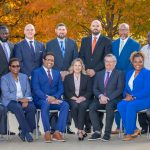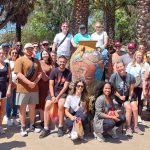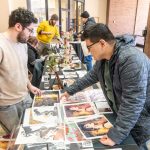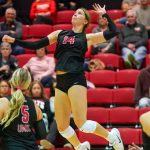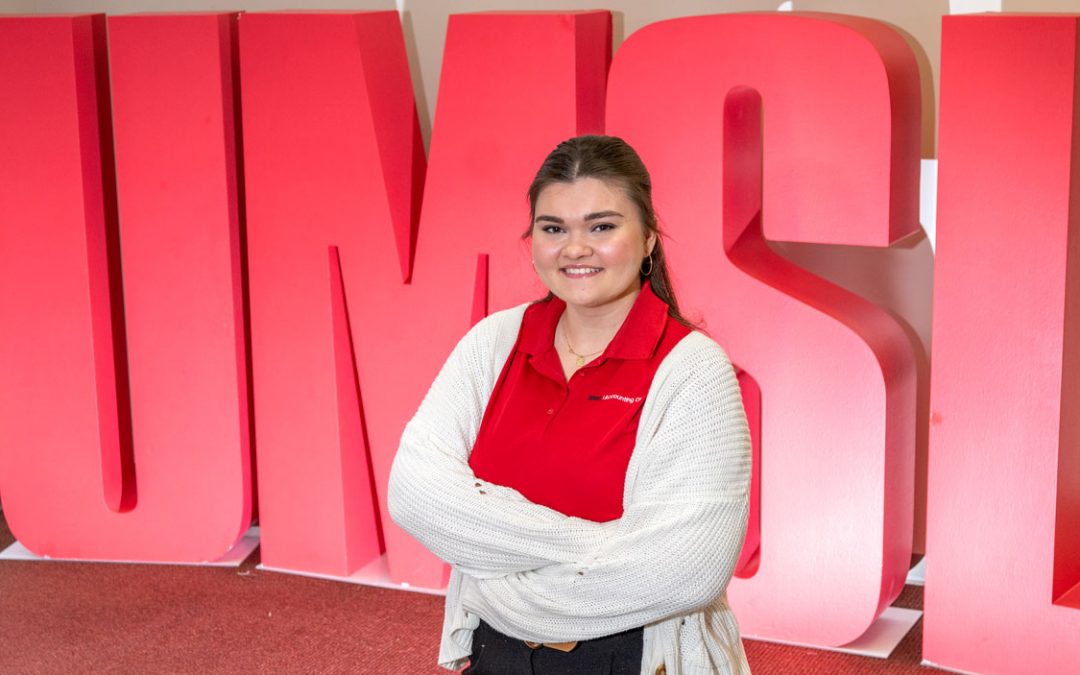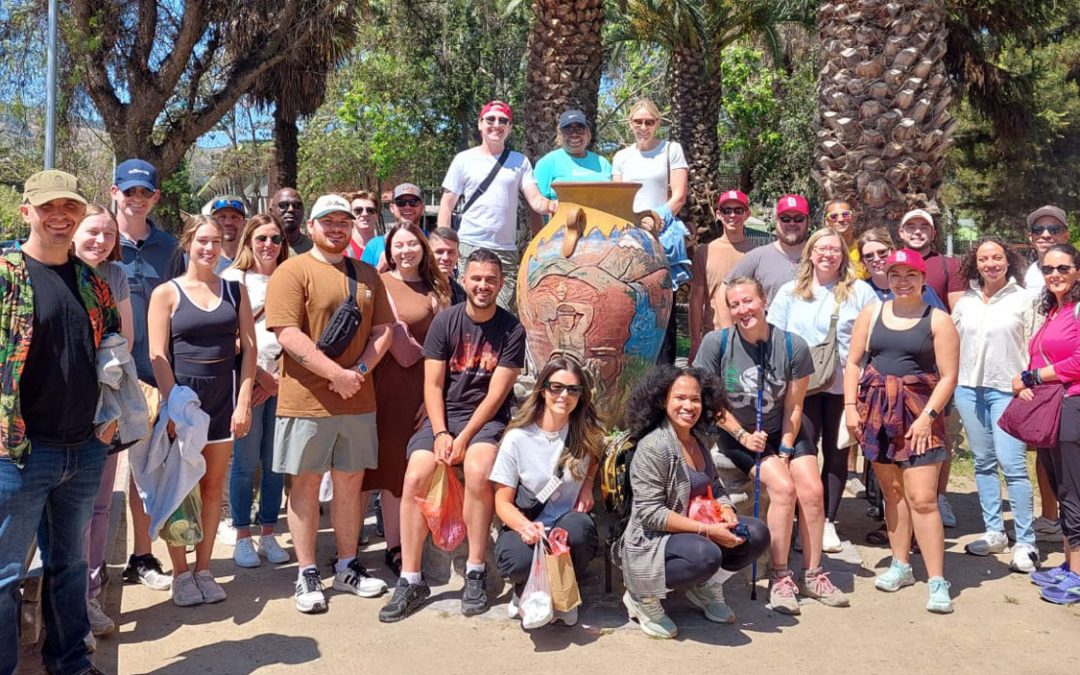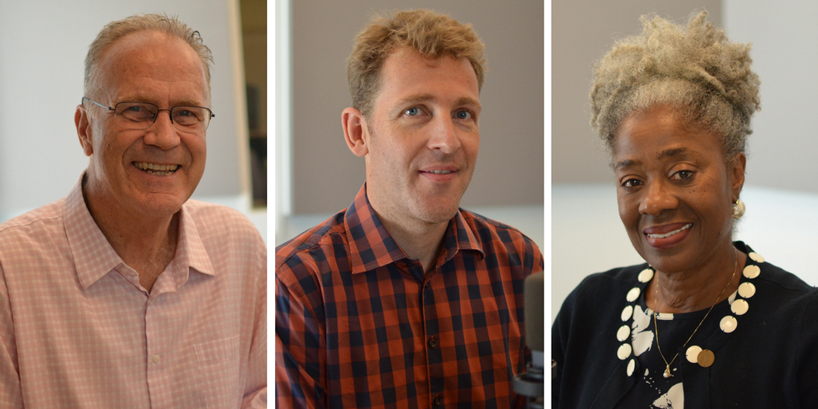
Professor Todd Swanstrom (at left) appeared on “St. Louis on the Air” on Tuesday and took part in a discussion with Jörg Plöger and Sandra Moore about lessons St. Louis can learn from revitalized industrial cities in Europe. (Photo by Kelly Moffitt/St. Louis Public Radio)
St. Louis, like a lot of other cities in the middle part of the United States, has been hurt by declining industrialization in recent decades.
As people throughout this area try to figure out ways to reshape St. Louis and position it for a brighter future, some are trying to glean lessons from places that have undergone similar transformations, including cities in Europe.
Todd Swanstrom, the E. Desmond Lee Endowed Professor of Community Collaboration and Public Policy Administration at the University of Missouri–St. Louis, was part of a panel discussing that subject Tuesday afternoon on “St. Louis on the Air” on St. Louis Public Radio | 90.7 KWMU.
He joined host Don Marsh, Urban Strategies president Sandra Moore and Jörg Plöger, the senior researcher for the Institute for Urban and Regional Development in one such city, Dortmund, Germany.
“I think one of the things that I think is quite important to realize is that good sort of urban planning – in terms of high-quality building of neighborhoods and revitalization, reusage of older building, preserving industrial heritage, that whole sort of conglomerate of actions – would be something that I think needs to be done in a well-planned manner,” Plöger said in offering the central theme of the discussion. “This is not always happening, but it is happening in many of the cities that we have studied.”
But Swanstrom described some realities St. Louis and some other American cities must overcome as they look to emulate the success of places such as Dortmund.
One is the decay of the urban center.
“You have this core city, which has experienced such financial and economic stresses with regard to high levels of poverty, I think it’s weakened the entire region,” Swanstrom said. “Now I think the core city is coming back in many ways. Lots of good things are happening with NGA (National Geospatial-Intelligence Agency), with Choice and Promise Neighborhoods, with the Cortex, with all the things that are happening in the city. So it’s beginning to come back. …
“But the fact that we have this core that was weakened I think weakened us as a region competing with Chicago, competing with Milwaukee, Cincinnati, all these other competitors of ours. Dortmund is more coherent. Its core is not as declined as St. Louis.”
Part of that decay has been created by sprawl in the United States.
“We’ve produced hundreds of thousands of units of housing in the suburban periphery beyond the growth in households, so we have vacancy and abandonment through all the core communities and now in many inner-ring suburbs,” Swanstrom said. “That’s the kind of thing that doesn’t happen in Dortmund.”
St. Louis also has a particular problem with government being fragmented at the local level.
“You have over 300 general-purpose governments who are trying to plan for land use,” Swanstrom said. “Looking at Jörg, it seems to me in Dortmund you have more of one larger city and regional government that can think about how we should be planning land use in the future.”
All those divisions can create unhealthy competition.
“It’s on what basis do you compete? Do you compete at a kind of beggar-thy-neighbor competition in order to get the tax-ratables into your school district or to your municipality, which means you’re taking from some other school district or some other municipality?” Swanstrom said. “That’s a problem.”
Swanstrom offered one reason for hope these issues will eventually be sorted out.
“We are embracing an urban lifestyle I think more and more, especially millennials, especially young people, and in some cases empty nesters,” he said. “I always say density is a four-letter word. If you think about, well, walkability – would you like to be able to get up in the morning and walk to a coffee shop and walk to a store to get your groceries and walk to a farmer’s market and walk to a movie theater? If you want to do those sorts of things, then you need density. Density has a very bad ring to it, but walkability has a good ring. I think we are embracing it.”
The entire discussion can be found in its entirety here.
Ploger will serve as the keynote speaker at an event titled “Revitalizing Older Industrial Cities: What Can the U.S. Learn from Europe?” It is sponsored by Creating Whole Communities, the Public Policy Research Center at UMSL and Development Strategies, and will take place from 4:30 to 6 p.m. Wednesday at The Center of Clayton with a reception to follow. Registration is free.



